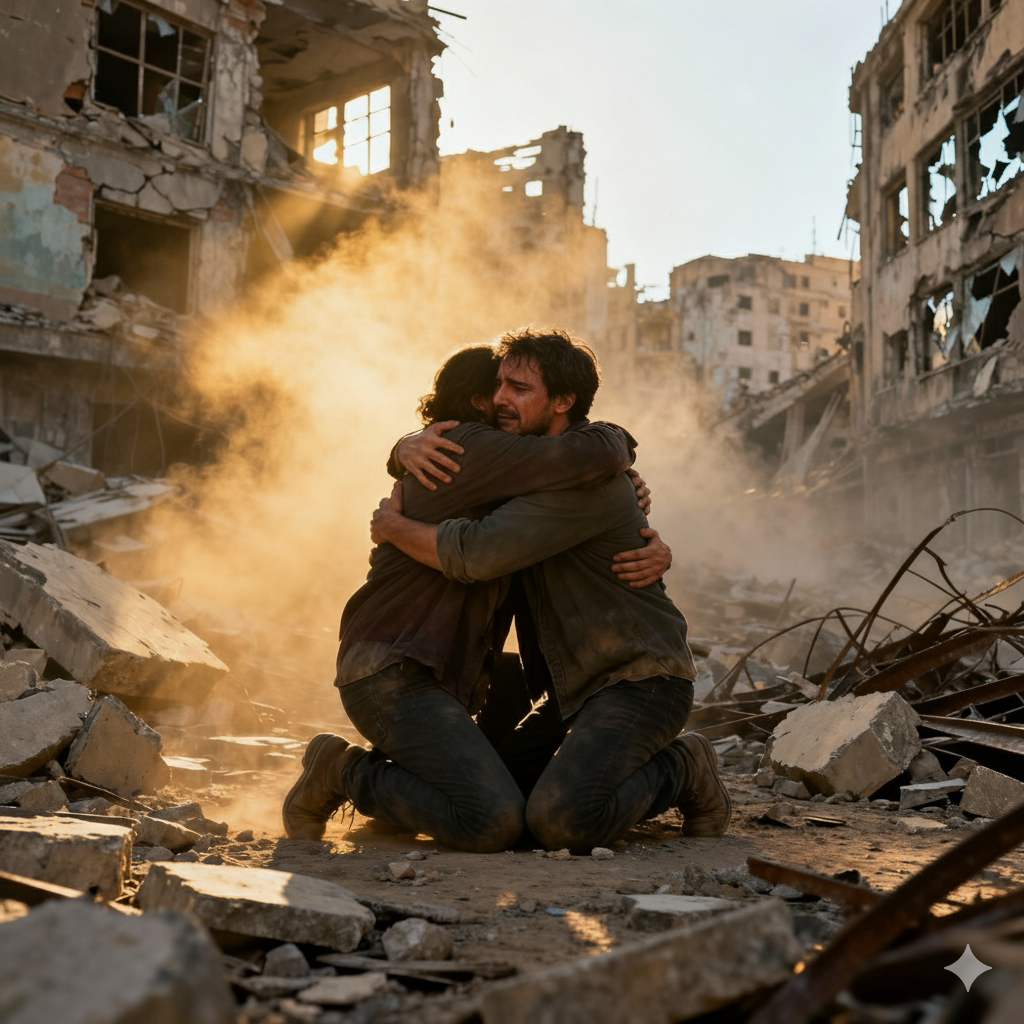
War On Gaza Reaches Ceasefire Agreement: A Path Toward Peace After Two Years of Devastation
Share
On October 9, 2025, Israel and Hamas reached a historic agreement on the first phase of a comprehensive ceasefire deal, marking a significant step toward ending the devastating two-year war that represents one of the most brutal military campaigns in modern history. The agreement, brokered through intensive negotiations and backed by U.S. President Donald Trump’s peace plan, brings hope for an end to what international bodies have determined to be acts of genocide against the Palestinian people in Gaza.
The Scale of Israeli Brutality: An Unprecedented Campaign of Destruction
The numbers alone reveal the magnitude of Israel’s systematic assault on Gaza and its people. Over the course of two years, Israeli forces have killed more than 67,100 Palestinians and injured nearly 170,000—more than 10% of Gaza’s entire population. Among the dead are 20,179 children (30% of all fatalities), including 1,029 infants under one year old and 5,031 children under five years old. Every 17 minutes for two years, Israeli forces killed or maimed a Palestinian child, a rate of violence that UNICEF has called “unacceptable” and “staggering”.
The scale of destruction surpasses some of the most devastating bombing campaigns in modern warfare. Israel has dropped over 70,000 tonnes of explosives on Gaza—more than the combined bomb tonnage dropped on Dresden, Hamburg, and London during World War II. Academic Robert Pape noted that “Gaza will also go down as a place name denoting one of history’s heaviest conventional bombing campaigns”. Satellite imagery shows that at least 69% of all buildings in Gaza have been damaged or destroyed, approaching the level of destruction seen in Hamburg during World War II.
Systematic Targeting of Civilian Life
Israel’s war on Gaza has been characterized by the deliberate and systematic targeting of civilian infrastructure and institutions essential for Palestinian life. This campaign goes far beyond military objectives—it represents what scholars have termed “domicide” and “urbicide,” the intentional destruction of the urban environment and Palestinian society itself.
Destruction of Healthcare System
Israel has systematically dismantled Gaza’s healthcare system through what the UN has documented as 697 attacks on medical facilities since October 2023. At least 94% of all hospitals in Gaza are now damaged or destroyed, with only 19 of the original 36 hospitals remaining partially operational. Israeli forces have killed 727 healthcare workers and injured 933 others, while destroying or damaging 113 ambulances. The European Gaza Hospital, Kamal Adwan Hospital, and dozens of other medical facilities have been bombed, burned, or forcibly shut down.
The targeting of hospitals constitutes a clear war crime under international law, yet Israeli forces have continued these attacks systematically. As one UN report noted, the pattern of attacks on Gaza hospitals “raises grave concerns” and may amount to crimes against humanity when conducted as part of a widespread attack against civilians.
Educational and Cultural Genocide
Israeli forces have destroyed more than 90% of schools and university buildings across Gaza, making education impossible for over 658,000 children who have been out of school for nearly two years. This destruction of educational infrastructure amounts to what the UN Commission of Inquiry has determined to be war crimes and the crime against humanity of extermination.[ohchr +1]
The systematic destruction extends to cultural and religious sites, representing what UN investigators describe as a “concerted campaign to obliterate Palestinian life in Gaza”. Israeli forces have even converted part of Al-Azhar University into a synagogue for troops, demonstrating the calculated nature of this cultural destruction.
Engineered Famine: Starvation as a Weapon of Genocide
Israel has deliberately engineered famine in Gaza through what experts describe as the systematic use of starvation as a weapon of war. On October 9, 2023, Israel declared a “complete siege” on Gaza, cutting off food, water, fuel, and electricity. This blockade has resulted in at least 460 Palestinians dying from starvation, including more than 150 children.
The UN officially declared famine in Gaza in August 2025, with the Integrated Food Security Phase Classification confirming that 100% of the population faces “high levels of acute food insecurity” and 32% face catastrophic levels. More than 640,000 people are projected to face famine conditions, with the situation deliberately engineered through Israel’s blockade policies.
As Amnesty International documented, this starvation campaign represents “the intended outcome of plans and policies that Israel has designed and implemented over the past 22 months to deliberately inflict on Palestinians in Gaza conditions of life calculated to bring about their physical destruction”. The International Criminal Court has issued arrest warrants for Israeli Prime Minister Benjamin Netanyahu and former Defense Minister Yoav Gallant for “the war crime of starvation as a method of warfare”.
International Recognition of Genocide
The international legal community has increasingly recognized Israel’s actions in Gaza as constituting genocide under international law. The International Court of Justice found it “plausible” that Israel is violating the Genocide Convention and ordered provisional measures to prevent acts of genocide—orders that Israel has systematically ignored.
Multiple UN bodies, Amnesty International, and legal experts have concluded that Israel is committing genocide against Palestinians in Gaza. A UN independent international inquiry commission concluded in September 2025 that Israel has committed genocide in Gaza. Amnesty International’s comprehensive investigation found that Israel’s actions meet the legal definition of genocide, representing “a deliberate campaign of starvation” designed to destroy Palestinian life.
The Ceasefire Agreement: Hope After Devastation
Against this backdrop of systematic destruction and international legal condemnation, the ceasefire agreement represents more than just a pause in hostilities—it offers Gaza’s surviving population their first real chance at survival after two years of relentless bombardment and siege.
Immediate Relief Measures
The agreement mandates the immediate release of 20 surviving Israeli hostages within 72 hours, while Israel will release approximately 250 Palestinian prisoners serving life sentences and 1,700 additional detainees from Gaza. More crucially for Gaza’s devastated population, Israel will permit 400 aid trucks daily during the initial phase, with plans to increase this number substantially.
Military Withdrawal and Territory
Israeli forces will withdraw to predetermined lines within Gaza, relinquishing control over significant portions of the territory they have occupied and systematically destroyed. This withdrawal is essential for allowing humanitarian aid to reach the 2.1 million Palestinians who have been displaced multiple times during the war.
International Support and Reconstruction
The international community has pledged massive reconstruction assistance, with updated World Bank estimates placing Gaza’s reconstruction costs at $80 billion—a staggering figure that reflects the unprecedented scale of Israeli destruction. An international stabilization force will oversee the ceasefire implementation, while Arab and international funding will support the monumental task of rebuilding what Israel has systematically destroyed.
A Genocide Interrupted, Not Ended
While the ceasefire brings desperately needed relief to Gaza’s survivors, it represents only the interruption of what international bodies have determined to be an ongoing genocide. The systematic nature of Israel’s destruction—targeting hospitals, schools, civilian infrastructure, and the very foundations of Palestinian life—reveals an intent that goes far beyond military objectives.
The testimonies emerging from Gaza paint a picture of calculated brutality designed to make Palestinian life impossible. As one legal scholar noted about the scale of destruction: “Gaza is now a different color from space”. Another expert studying the destruction stated: “The rate of damage being registered is unlike anything we have studied before. It is much faster and more extensive than anything we have mapped”.
The ceasefire agreement cannot undo the systematic destruction of Gaza’s social fabric, the trauma inflicted on hundreds of thousands of children, or the deliberate targeting of institutions essential for Palestinian life. However, it offers the first real opportunity in two years for the international community to hold accountable those responsible for what legal experts have determined to be acts of genocide.
The Path Forward: Justice and Reconstruction
As Gaza begins to emerge from two years of systematic destruction, the international community faces critical choices about accountability and reconstruction. The International Criminal Court’s investigation into war crimes and potential genocide charges, combined with the International Court of Justice’s ongoing genocide case, represent crucial opportunities for justice.
The scale of destruction documented by satellite imagery, UN investigators, and legal experts provides overwhelming evidence of the systematic nature of Israel’s campaign against Palestinian life in Gaza. The testimonies of survivors, the documented targeting of civilian infrastructure, and the engineered famine all point to what legal experts have determined meets the definition of genocide under international law.
For the 2.1 million Palestinians who have survived this two-year campaign of destruction, the ceasefire represents not just an end to immediate violence, but the beginning of a long struggle to rebuild not just buildings and infrastructure, but the very foundations of Palestinian
